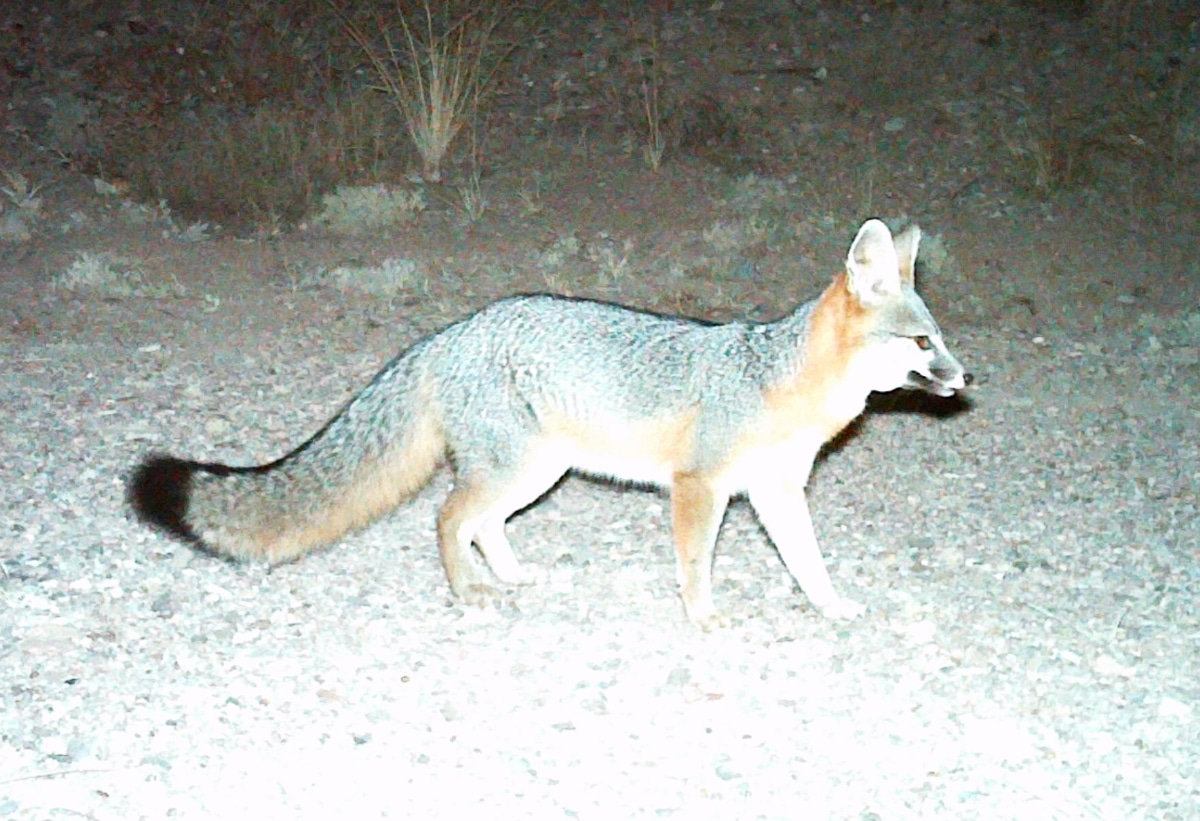
Sitting quietly in front of Casitas de Gila Guesthouses late at night, one cannot help but wonder about what might be going on down along Bear Creek, a hundred feet below. What wildlife might be there in the darkness, and what might it be doing? On most nights, even a short time spent listening intently on one’s cliffside perch offers a fascinating auditory experience of Nature as numerous curious and unfamiliar sounds punctuate the soft background murmur of Bear Creek wending its way downstream. Some sounds are readily identified, such as the distant yapping of the coyote in Winter, the deep hoot of the owl in Spring, or the ceaseless throb of the crickets in Summer. But others are new and strange to the ear, their source and cause unknown and possibly disconcerting as one perceives strange snorts and grunts, the thrashing in the underbrush, something splashing the creek, the various yips, snarls, or growls, the sudden clatter of a dislodged rock falling down cliffs, mysterious shrill bird-like whistles, isolated chirps or endless repetitive trills, or, upon rare occasion, the unmistakable primal call of an animal in terminal distress. Eventually, the call of sleep is overwhelming and one retires for the night, drifting off to sleep contemplating the source and reason for those intriguing sounds.
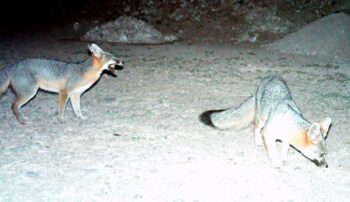
“Come on, let’s GO .. quit your sniffin’
around … you’re burning darkness;
there’s nothing here!”
(Mr. & Mrs. Gray Fox, looking to dine out)
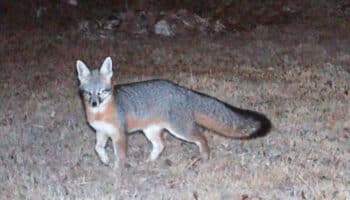
“Now WHERE did that foxy lady go???”
In the morning, one rises early and walks quietly along the creekside trails hoping for a glimpse of the various animals and birds that make their home here. But even if the wildlife doesn’t show, one finds tracks of all kinds along the trails and the edge of Bear Creek, visual remnants of their maker’s activities from the night before. It’s an enjoyable and interesting challenge to try to match up the tracks of the morning with the sounds of the previous night. Sometimes it can be done. You watch as a band of Bighorn Sheep scamper along the ledges of the vertical cliff on the east side of Bear Creek, heading out for a morning’s grazing on the mountainside, one of them dislodging a rock that crashes down into the sycamore below. And you remember that sound from last night. But what, you wonder, was that sheep doing moving around on the cliff in the dark? A little further on you find a few clumps of soft fur near some grass at the edge of Bear Creek. The ground is disturbed, as if a struggle took place. Could this be the source of that disturbing plaintive cry in the dark? On certain trails and places you come across a confusion of tracks of all shapes and sizes. Some are easily identified; others, one is not so sure about. But one thing is for certain: there sure was a lot of activity down in the Creek last night!
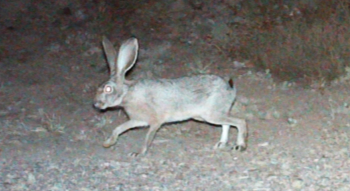
“Me thinks there’s foxes about.”
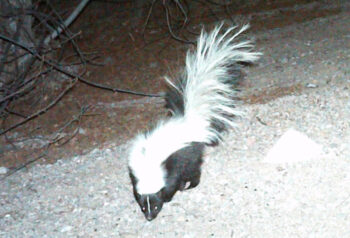
“Foxes, you say … What? … Me Worry?”
Over the past 25 years that Becky and I have been welcoming guests to Casitas de Gila Guesthouses, we have come to identify many of the nocturnal sounds that we hear at night and associate them with visual daylight observation of most of the wildlife that calls the Casitas de Gila Nature Preserve their home. Many, but not all by any means!
And so it was with great anticipation when our good friend and neighbor, Bill Marcy, announced some years ago that his wife Dale had gifted him with a camera that could be set out in the field and left for days at a time, whereupon sensing movement of any sort, the camera would activate automatically and photograph wildlife going about their activities, day or night. At the time, I was only vaguely aware of these trail cameras, or game cameras as they are sometimes called, and knew little about them. As Bill explained his camera’s capabilities, it seemed to me that this just might be the thing for learning more about the habits of some of the unidentified nocturnal wildlife on the Nature Preserve and, perhaps, the source of some of the remaining unidentified nighttime sounds that we often hear. Together, we began to think about which trails and locations down along the Creek might offer the best results.
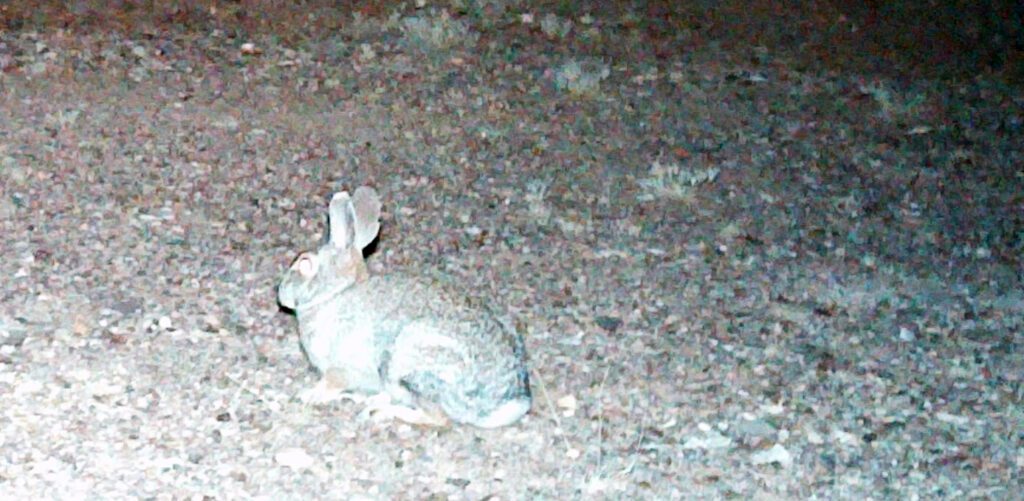
“Well, I do … so I’M leaving.”
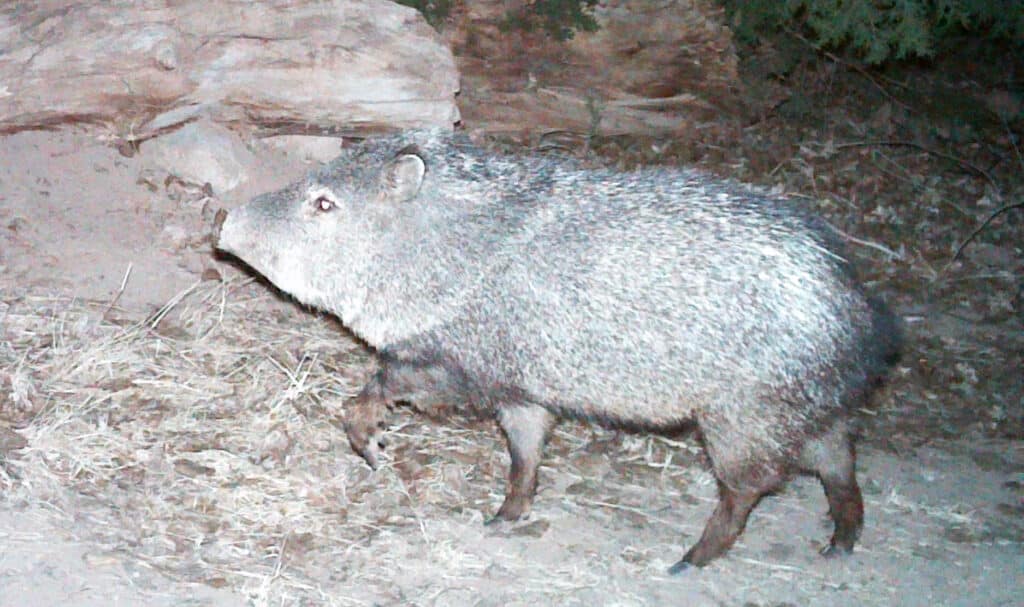
“Forget about the foxes … there’s something
else on the wind …”
Once the domain of only the most serious nature photographer, digital photography has now made the field of automatic sensing and self-activating cameras affordable for anyone interested in learning more about the life of resident wildlife. Ranging in cost from under $100 to $400-$500, a wide range of trail cameras are now available to provide the nature enthusiast or families with countless hours of enjoyment in the field and at home. Choosing a camera is fairly easy, depending on one’s interest, and there are numerous sites on the internet (1) which will aid in the selection. Whether you and your family simply want to discover what creature is stealing the bird seed from your backyard feeder at night, or you have a deep passion for nature study and want to make an intensive study and photographic journal of the various wildlife that would frequent a particular water hole or well-traveled animal trail over a week’s time, you can find a trail camera to suit your budget and needs.
About Trail Cameras …
Like all digital cameras, trail cameras have advanced greatly in the past few years. As in any type of photography there are several features on which a camera choice will be made:
- Type of Flash – Trail cameras have either an incandescent or infrared flash. Each has its pros and cons. Cameras equipped with an incandescent flash are capable of rendering high resolution, quality full-color photos both at night as well as during the day, but the bright flash tends to frighten some wildlife away and will also attract the attention of other humans when left unattended in the field. Cameras equipped with an infrared flash will take full-color or black and white photos during the day, but all of them will take only black and white photos at night, which tend to be of lower resolution and quality than incandescent cameras of comparable cost. On the positive side, infrared cameras do not frighten wildlife as they only emit a faint red glow when triggered, which is difficult to see unless the photographed subject is looking straight at it. A recent higher-cost feature for infrared flash is that of using an infrared spectrum wave length that is undetectable to the human eye, one that emits no glow and cannot be seen even when looking straight at it.
- Flash Range – This is the distance at which a subject can be photographed at night, and can vary from less than 20 feet to 80 feet or more in high-end cameras.
- Trigger Time – This is the amount of time a camera takes to detect the subject, snap the photo and record it on the memory card. Here, faster is better and more desirable.
- Detection Zone Width and Range – This is the area that is covered in front of the camera that is being monitored by the camera’s motion sensor. The detection zone in cameras is defined by width (narrow to wide angle) and range (distance from 30 feet to 100 feet) and will vary on different cameras depending on their intended use.
- Recovery Time – This is the amount of time it takes the camera to take a photo, record that photo on a memory card, and then reset, ready to take the next photo. Recovery times vary greatly, from as little as one-half second to as much as 60 seconds.
- Type of batteries – Batteries on most cameras are either rechargeable or regular small ones such as AA. Battery life can range from several weeks to several months and can take hundreds to several thousands of pictures per set of batteries depending on the camera and type of memory card.
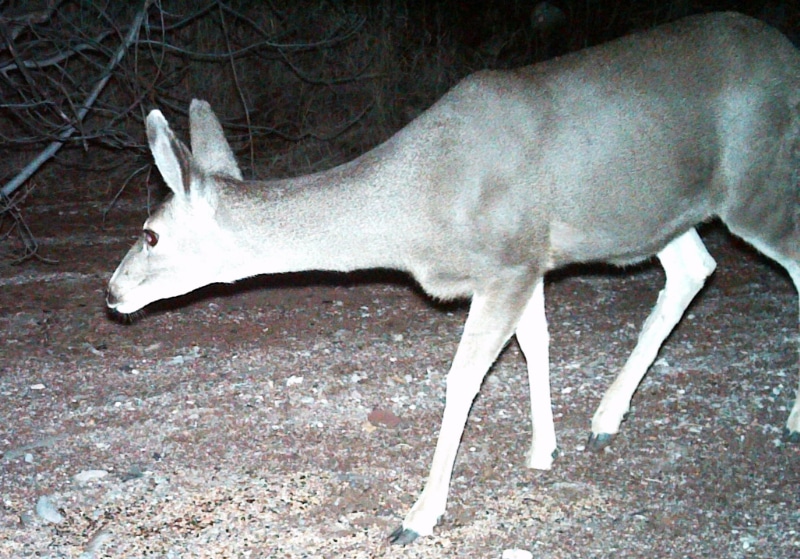
crooki) “Foxes? Nothing to worry about.”
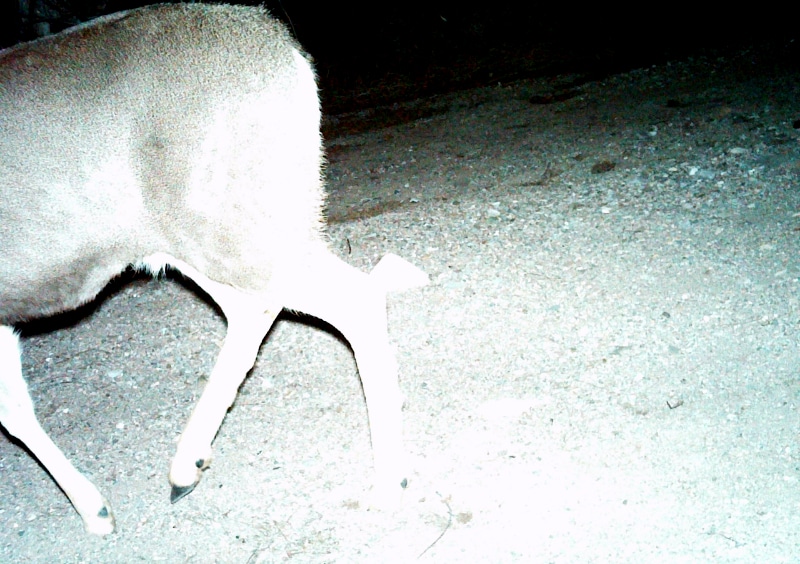
crooki) “Whoops! That’s not a fox! See ya.”
Today, trail cameras are increasingly being used in all sorts of outdoor activities, from weekend camping trips and family vacations, to amateur birding or naturalist expeditions, to professional wildlife research applications around the world, facilitating general reconnaissance studies, to population management and environmental data collection.
Like everything else in the digital world, trail cameras are rapidly evolving. Some of the new features which are available include video capability in addition to still photographs, simultaneous sound recording, time lapse capability, and, would you believe, even transmission of photos automatically to you via your cellular network in under 60 seconds from the time the photo is taken! Hmmm… enter the era of the Virtual Naturalist! Just think, pretty soon it won’t be necessary to even go outside and leave the living room couch at all! Amazing …

“HEY! Where’d everybody go? … Wait for me!”
Through the years, Bill has enjoyed setting out his camera in various places around the Casitas de Gila Nature Preserve and has gotten some great photos, some of which are shown in this blog. So far, all of the nighttime photos have been of animals that are commonly seen here during daylight hours. Some of the small and more nocturnal animals known to live here, such as the Raccoon and the shy Coatimundi, have thus far been successful in avoiding the camera. Likewise missing in action is the Ringtail, which is also thought to live here. In terms of larger animals, neither Black Bear or Mountain Lion have turned up yet for their private photo shoot, even though visual sightings of both have been made on the preserve. Bill is not discouraged though, and for each of us here at the Casitas the thrill of the hunt continues as this blog is written. Maybe tonight will be the night!
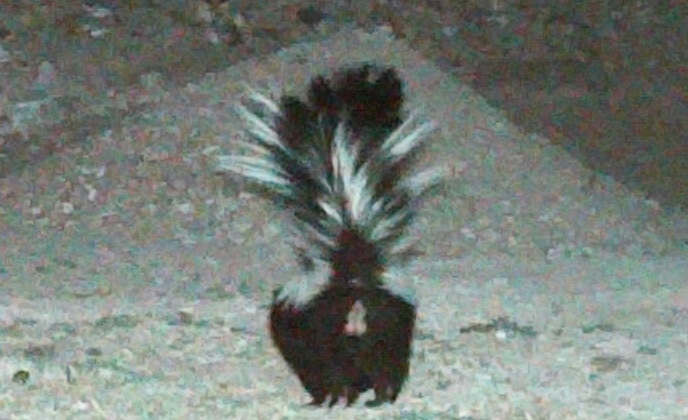
REFERENCES
www.trailcampro.com is a great site if your are thinking about purchasing a trail camera. They have detailed reviews on many models with lots of actual photos, and state that they personally test all the cameras they sell.
Answer: bobcat (Felis rufus)


